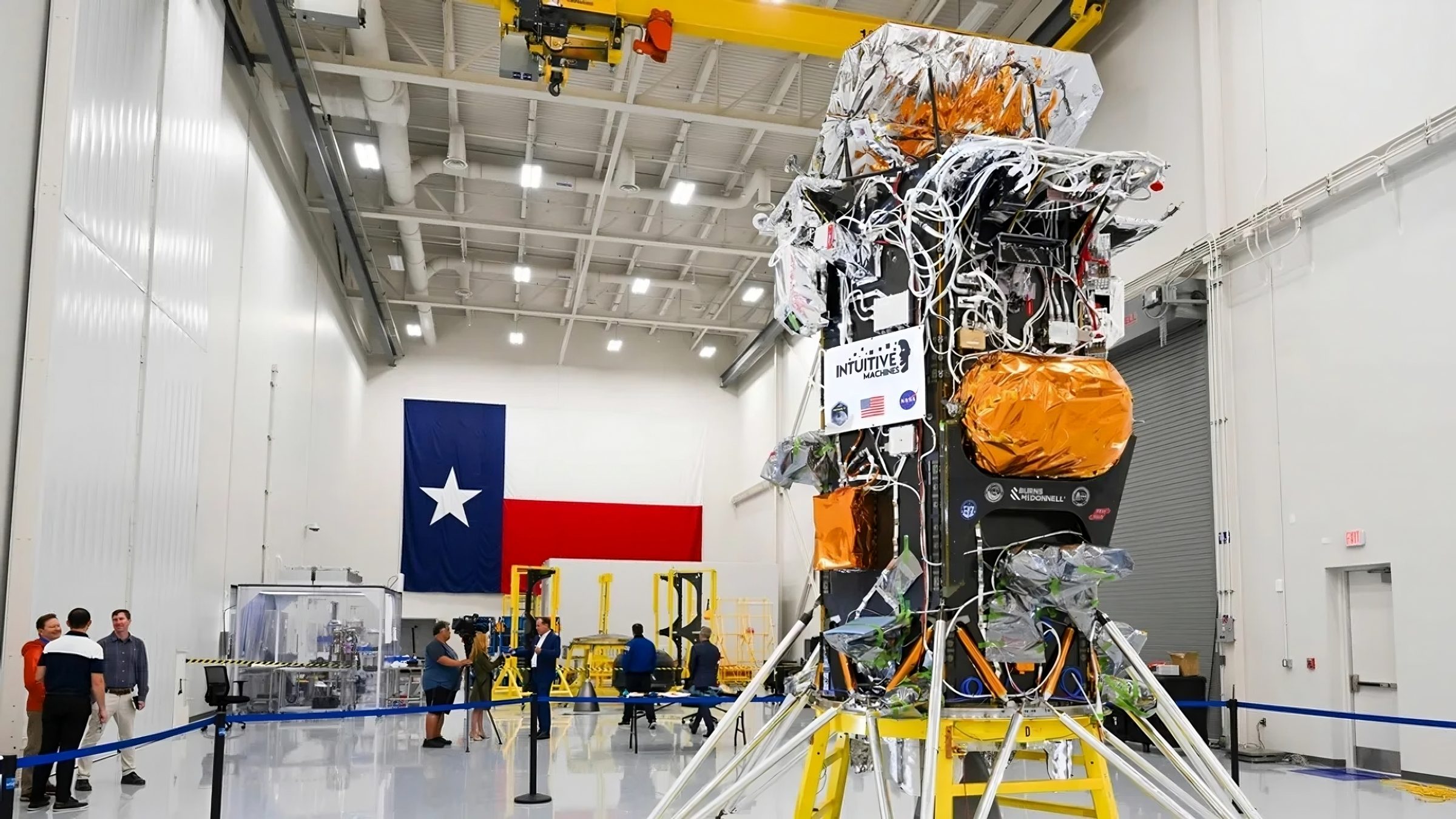A SpaceX Falcon 9 rocket launched a robotic spacecraft to the moon early Thursday, setting up a landing on Feb. 22, which — if successful — would be the first soft landing on the moon for the United States since the last of the Apollo missions and the first commercial vehicle to touch down on the lunar surface.
The Falcon 9 rocket lifted off at 1:05 a.m. Eastern time from launchpad 39A at NASA’s Kennedy Space Center, the same pad from which a Saturn V rocket hoisted the crew of Apollo 17 on its trip to the moon in 1972. The Falcon 9 carried a spacecraft developed by Intuitive Machines, a company based in Houston. No people were on board.
The mission is being carried out under a contract with NASA, which is paying Intuitive Machines USD 118 million to fly several of its payloads to the lunar surface. NASA sees the mission as part of its Artemis campaign to return astronauts there.
Hours after the launch, the company said the spacecraft had established “a stable attitude, solar charging, and radio communications contact with the company’s mission operations center in Houston.”
We are keenly aware of the immense challenges that lie ahead. However, it is precisely in facing these challenges head-on that we recognize the magnitude of the opportunity before us: to softly return the United States to the surface of the Moon for the first time in 52 years.
– Steve Altemus, Intuitive Machines CEO
The Nova-C lander, called Odysseus, has instruments “to demonstrate technologies that will enhance the efficiency, precision, and safety of future spacecraft landing as well as investigate the surface of the of the south polar region of the moon,” Debra Needham, a NASA program scientist, said in a briefing before the launch.
But NASA is largely just a paying customer in an endeavor being driven by the private sector — a commercial spacecraft being launched by a commercial rocket — a paradigm the space agency is increasingly relying on during its exploration campaigns in Earth orbit, as well as beyond.
Six years ago, the U.S. industry said they were ready for NASA to purchase robotic lunar landings as a service instead of us doing it ourselves.
– Joel Kearns, deputy associate administrator for exploration in NASA’s science mission directorate
The Intuitive Machines landing attempt follows another private venture, Astrobotic, which launched its spacecraft to the moon last month also under contract from NASA. Its landing attempt, however, was thwarted by a problem with the spacecraft’s propulsion system that prevented it from reaching the moon.
NASA has acknowledged that some of the missions might fail. But its leaders say they expect to gain knowledge even from the failures and have lined up companies to make robotic landing attempts, or in the words of its leaders, “take shots on goal.” NASA officials have said they hope that over the next several years there could be at least two robotic missions a year to the moon as part of what it calls its Commercial Lunar Payload Services Program.

The Intuitive Machines Nova-C lunar lander is seen on display in October 2023 in Houston
Going into this … we didn’t believe that success was assured, as these U.S. companies, for the first time, go to the moon — something that nobody’s done robotically in the U.S. since 1968, and the last Apollo mission was in 1972. What I can tell you is that we’re learning from every attempt.
– Joel Kearns
Intuitive Machines’ mission is also a risky one. And the launch of its Odysseus spacecraft, which is 14 feet tall and has six landing legs, is just the first step in a long, perilous journey to the lunar surface. If successful, it will land in the region of the lunar south pole, which NASA wants to explore with astronauts because of the possible presence of water in the form of ice in the permanently shadowed craters there. Water is important to any prolonged mission to the moon because it’s vital to sustain human life, and because its component parts, hydrogen, and oxygen, can be used as rocket fuel to allow for further exploration of the solar system.
Unlike Apollo, NASA is looking to build an enduring presence on and around the moon’s south pole, a region that China is also interested in exploring.
We’re not trying to redo Apollo. What we’re doing today is we’re going after scientific and technological studies that weren’t even envisioned back at the time of Apollo to answer major scientific questions. … And we’re going to a region of the moon, particularly this mission with [Intuitive Machines] and Artemis that people and robots have never been to — to really look for new things, like if there really is usable volatiles like water ice on the south pole of the moon.
– Joel Kearns
Odysseus is also carrying a NASA instrument designed to capture images of the dust plume kicked up by the spacecraft’s engines. Since the space agency anticipates eventually landing multiple spacecraft close to one another, it wants to better understand what effects landings have on the moon’s surface and environment.
It’s going to cause the dust to really churn up and create a big plume of dust. And so it’s going to be taking a set of cameras and looking down as that plume of dust comes up.
– Susan Lederer, NASA’s project scientist for the Intuitive Machines mission
That, she said, will help “future landers to be developed to better protect against the dust that’s being churned up.”
The spacecraft is also carrying a camera system designed by students and faculty from Embry-Riddle Aeronautical University that will be ejected from the spacecraft at about 100 feet above the moon’s surface to take images of the vehicle during the landing sequence.

